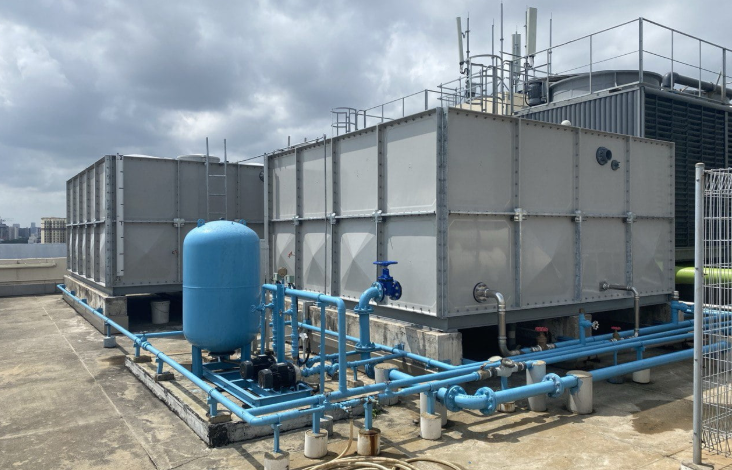Tips for Choosing the Right Fittings for Storage Tanks

Introduction
When it comes to managing industrial, agricultural, or commercial storage tanks in California, choosing the right tank fittings can make the difference between long-term performance and costly repairs. From chemical containment to water treatment, the quality of your fittings directly affects safety, leak prevention, and system efficiency. One trusted provider for durable, corrosion-resistant components is Rhino Tank Fittings, known for their stainless steel solutions and seismic restraint systems designed for storage tanks in earthquake-prone regions.
Whether you’re overseeing a construction project or upgrading an existing tank system, understanding what to look for in fittings is crucial. This guide will walk you through the key factors to consider — from material selection and corrosion resistance to compliance and earthquake safety — to help you make informed decisions for your next tank installation or retrofit.
1. Understand the Function of Tank Fittings
Tank fittings are hardware components that connect pipes, valves, and other equipment to the tank. Their primary role is to allow fluid transfer in and out of the tank while maintaining a sealed, secure connection. Common types of tank fittings include:
- Bulkhead fittings
- Weld-in fittings
- Flanged fittings
- Threaded fittings
- Seismic restraint systems
Choosing the correct type depends on your tank’s function, the materials it stores, and site-specific conditions like seismic activity or outdoor exposure.
2. Material Matters: Why Stainless Steel is Preferred
In California’s industrial and agricultural environments, corrosion is a major concern. Many tanks are exposed to extreme weather, chemical substances, or moisture, making the choice of material critical.
Stainless steel stands out for several reasons:
- Corrosion resistance: Ideal for water, fertilizers, chemicals, and other corrosive substances.
- Strength and durability: Withstands high pressures and extreme conditions.
- Low maintenance: Resistant to rust and does not degrade over time like plastics or lower-grade metals.
Using stainless steel fittings from reputable manufacturers ensures a longer lifespan and reduces the risk of leaks, failures, or costly maintenance.
3. Earthquake Safety: Seismic Restraint Systems
California is well-known for its seismic activity, and tank failure during an earthquake can lead to hazardous leaks, spills, or structural damage. For this reason, seismic restraint systems are not just a bonus — they’re often a regulatory requirement in commercial and municipal installations.
A good seismic restraint system:
- Prevents tipping, sliding, or overturning during tremors
- Distributes loads evenly to minimize stress on the tank and fittings
- Meets state and local seismic compliance codes
Specialized fittings with built-in seismic protection, such as those offered by Rhino Tank Fittings, help ensure that your tank systems remain operational and secure even during earthquakes.
4. Sizing and Compatibility Considerations
Not all fittings are universal. To prevent installation issues and performance problems, you need to match the fitting dimensions with the tank design, pipework, and pressure requirements.
Key compatibility checks include:
- Pipe diameter and thread type
- Wall thickness of the tank
- Fitting material vs. tank material (for thermal expansion compatibility)
- Pressure and temperature ratings
Working with suppliers who offer custom sizing or guidance on compatibility ensures a better fit and greater reliability in the long run.
See also: How to File an Insurance Claim After a Disaster
5. Installation Tips for Long-Term Success
Even the best fittings can underperform if not installed properly. Follow these best practices during installation:
- Inspect all components before use: Check for cracks, burrs, or manufacturing defects.
- Use the right tools and torque levels: Over-tightening can damage threads or seals.
- Apply compatible sealants: For threaded fittings, use Teflon tape or other recommended sealants specific to the fluid type.
- Avoid dissimilar metals: When mixing materials like stainless steel and aluminum, use dielectric unions to prevent galvanic corrosion.
Professional installation by trained technicians also reduces risks and ensures compliance with building and safety codes.
6. Regulatory Compliance and Industry Standards
Industrial tanks and their fittings are often subject to both local and federal codes, especially in sectors like food processing, pharmaceuticals, or hazardous materials storage. It’s important to choose fittings that meet or exceed the following standards:
- NSF/ANSI certifications for potable water systems
- ASTM or ASME standards for material strength and pressure ratings
- California Building Code (CBC) for seismic design compliance
Partnering with manufacturers who clearly document certifications and compliance can help streamline inspections and avoid legal issues down the line.
7. Maintenance and Inspection Best Practices
Once installed, tank fittings should be regularly inspected to maintain performance and safety:
- Check for signs of corrosion or leakage
- Tighten connections as needed
- Replace worn gaskets or seals
- Clean fittings in chemical systems to prevent buildup
In high-risk environments, schedule formal inspections every 6 to 12 months. Some modern fittings even come with indicators that show signs of stress or wear, helping you catch issues early.
8. When to Upgrade or Replace Tank Fittings
If your current tank system was installed over a decade ago, it might not meet modern safety or efficiency standards. Consider upgrading your fittings if you notice:
- Recurrent leaks or failures
- Rust or corrosion around joints
- Compliance issues during inspections
- Poor performance under load or pressure
Modern stainless steel fittings are engineered for greater strength, easier installation, and seismic compliance — all critical for today’s operating standards.
9. Custom Fittings for Specialized Needs
Not every application can be served by off-the-shelf components. Custom tank fittings can be designed for:
- Unique tank geometries
- Uncommon pipe configurations
- High-pressure or high-temperature environments
- Specific seismic loads or local building codes
Work with manufacturers who offer custom engineering and design services to ensure the perfect fit for your project.
Final Thoughts
Storage tanks are a long-term investment, and using low-quality or incompatible fittings can drastically shorten their lifespan or increase safety risks. Whether you’re designing a new installation or retrofitting an old system, always consider corrosion resistance, seismic protection, and proper installation techniques.
For industrial-grade stainless steel fittings and seismic restraint systems that meet California’s rigorous demands, visit rhinofittings.com — a trusted provider for durable and compliant tank solutions.





